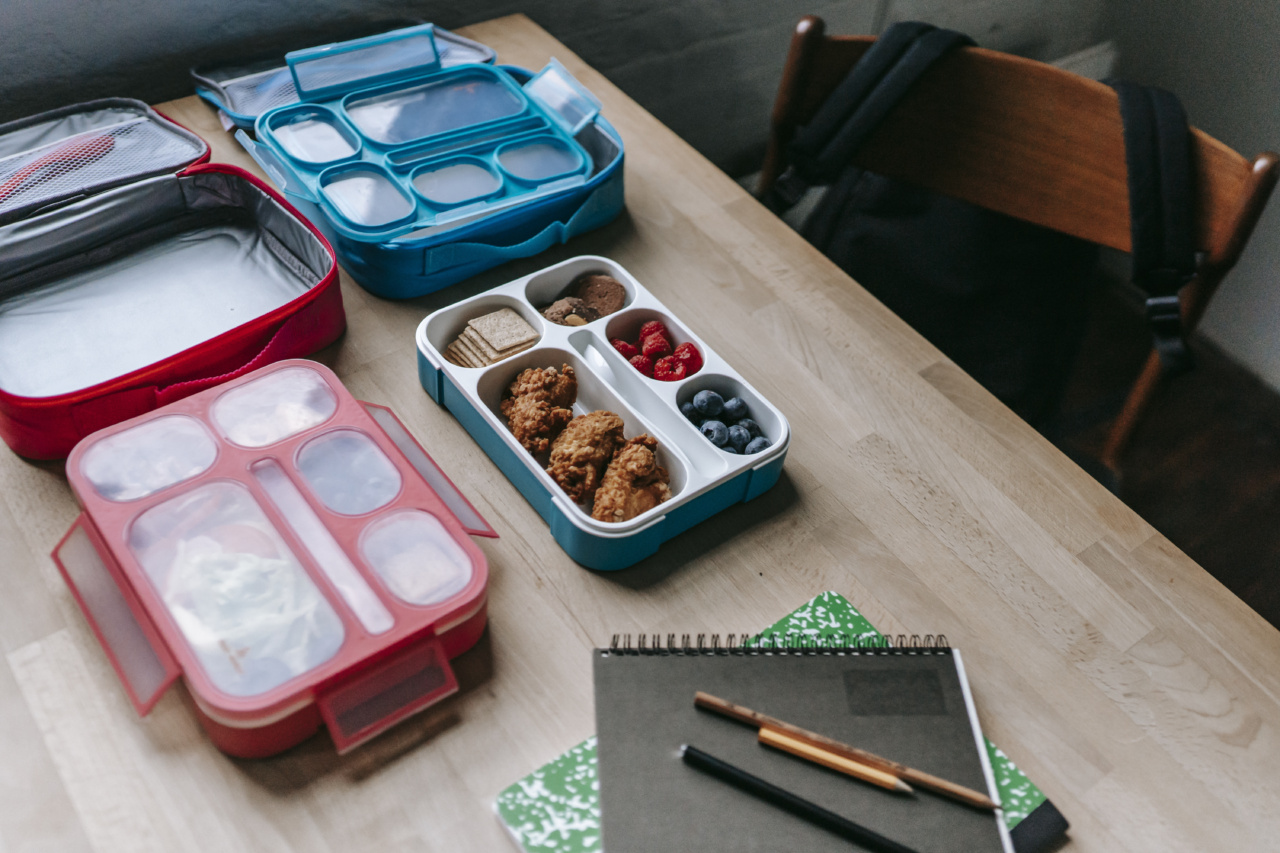Providing nutritious and delicious school lunches is essential for promoting the overall well-being and academic success of students.
A balanced diet during the school day not only fuels their bodies but also supports cognitive function and concentration. In this article, we will explore the importance of balanced and delicious school lunches and provide tips for creating meals that are both nutritious and appealing to children.
The Benefits of Balanced School Lunches
A well-balanced school lunch offers numerous benefits for students, such as:.
- Improved concentration and focus
- Enhanced academic performance
- Increase in energy levels
- Support for healthy growth and development
- Prevention of chronic diseases
- Development of lifelong healthy eating habits
The Key Components of a Balanced School Lunch
A balanced school lunch should incorporate the following components:.
1. Whole Grains
Whole grains provide essential nutrients and fiber which aid in digestion and promote a stable release of energy throughout the day. Incorporate whole grain options like whole wheat bread, brown rice, or whole grain pasta into the lunch menu.
2. Lean Proteins
Proteins are crucial for growing children as they support muscle development and provide sustained energy. Opt for lean protein sources such as skinless poultry, fish, beans, or tofu. Including a variety of protein options ensures a well-rounded meal.
3. Fresh Fruits and Vegetables
Fruits and vegetables are packed with vitamins, minerals, and fiber. Encourage children to consume a rainbow of fruits and vegetables to ensure a diverse range of nutrients. Offer fresh, sliced fruits or vegetable sticks as part of the school lunch.
4. Dairy or Dairy Alternatives
Dairy products are excellent sources of calcium and vitamin D, which support bone health. If your school caters to children with dairy allergies or lactose intolerance, consider providing dairy alternatives like fortified soy milk or almond milk.
5. Healthy Fats
Incorporate sources of healthy fats like avocados, nuts, and seeds, which provide essential fatty acids for brain development. Healthy fats also help students feel satisfied and reduce the risk of overeating unhealthy snacks later in the day.
Strategies for Creating Delicious School Lunches
While it’s important for school lunches to be nutritious, they should also be appealing to children’s taste buds. Here are some strategies to make school lunches more delicious:.
1. Engage Students in Menu Planning
Allowing students to have a say in menu planning can increase their interest in school lunches. Conduct surveys or hold meetings to gather students’ preferences and incorporate their suggestions when possible.
2. Incorporate Kid-Friendly Recipes
Design the menu using recipes that are specifically catered to children’s tastes. Offer a variety of options like wraps, homemade pizza, or vegetable-filled pasta dishes.
3. Add Color and Variety
A visually appealing plate can entice children to try new foods. Incorporate a variety of colorful fruits and vegetables to make the lunch more visually appealing and appetizing.
4. Provide Dipping Sauces
Children often enjoy dipping their food in sauces. Offer healthy dipping options like hummus, yogurt-based dressings, or homemade tomato salsa to make the meal more enjoyable.
5. Make Lunchtime Interactive
Create engaging activities during lunchtime like themed days or taste tests. This fosters excitement and curiosity about the meals served and encourages kids to try new foods.
Conclusion
Creating balanced and delicious school lunches is crucial for children’s overall well-being and academic performance.
By prioritizing nutritious ingredients and utilizing strategies to make the meals more appealing, schools can ensure that students receive the necessary nutrition while enjoying their meals. A well-fed student is a happy and thriving student!.



























